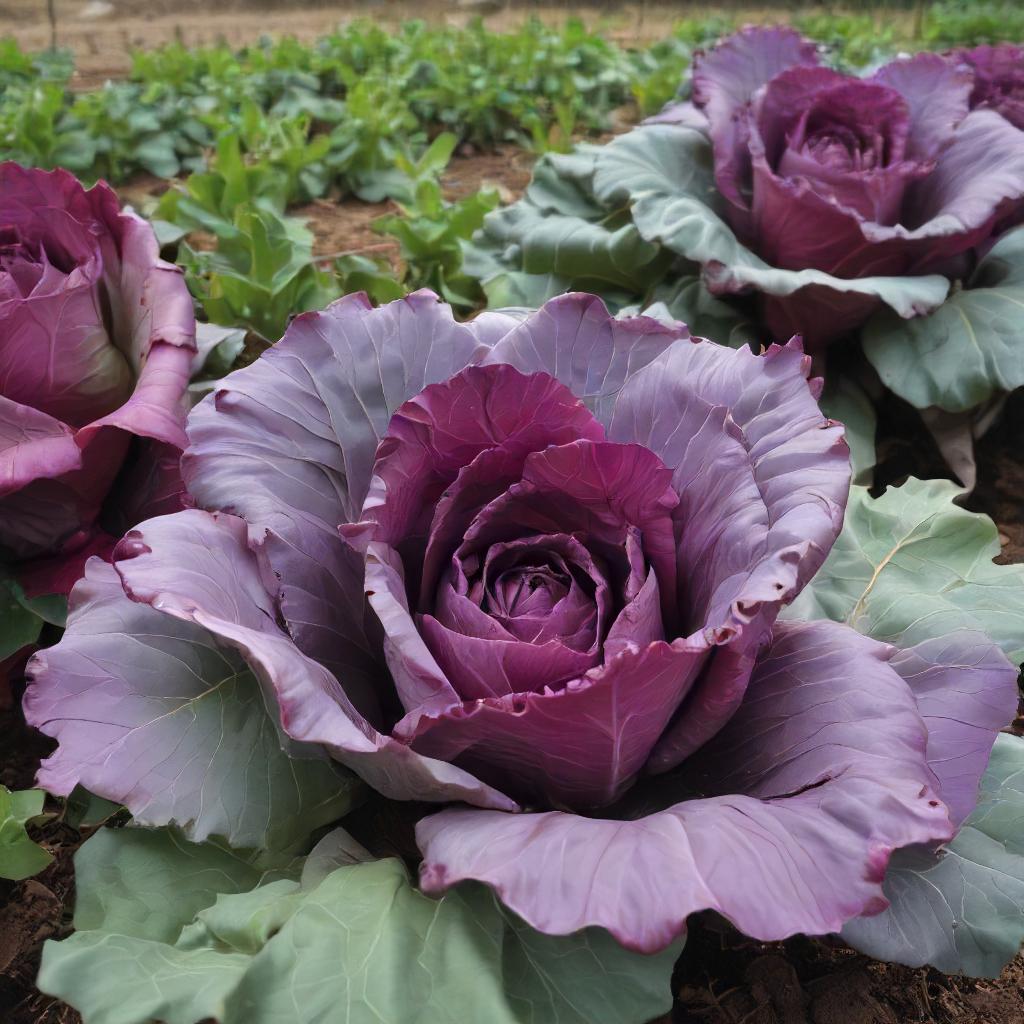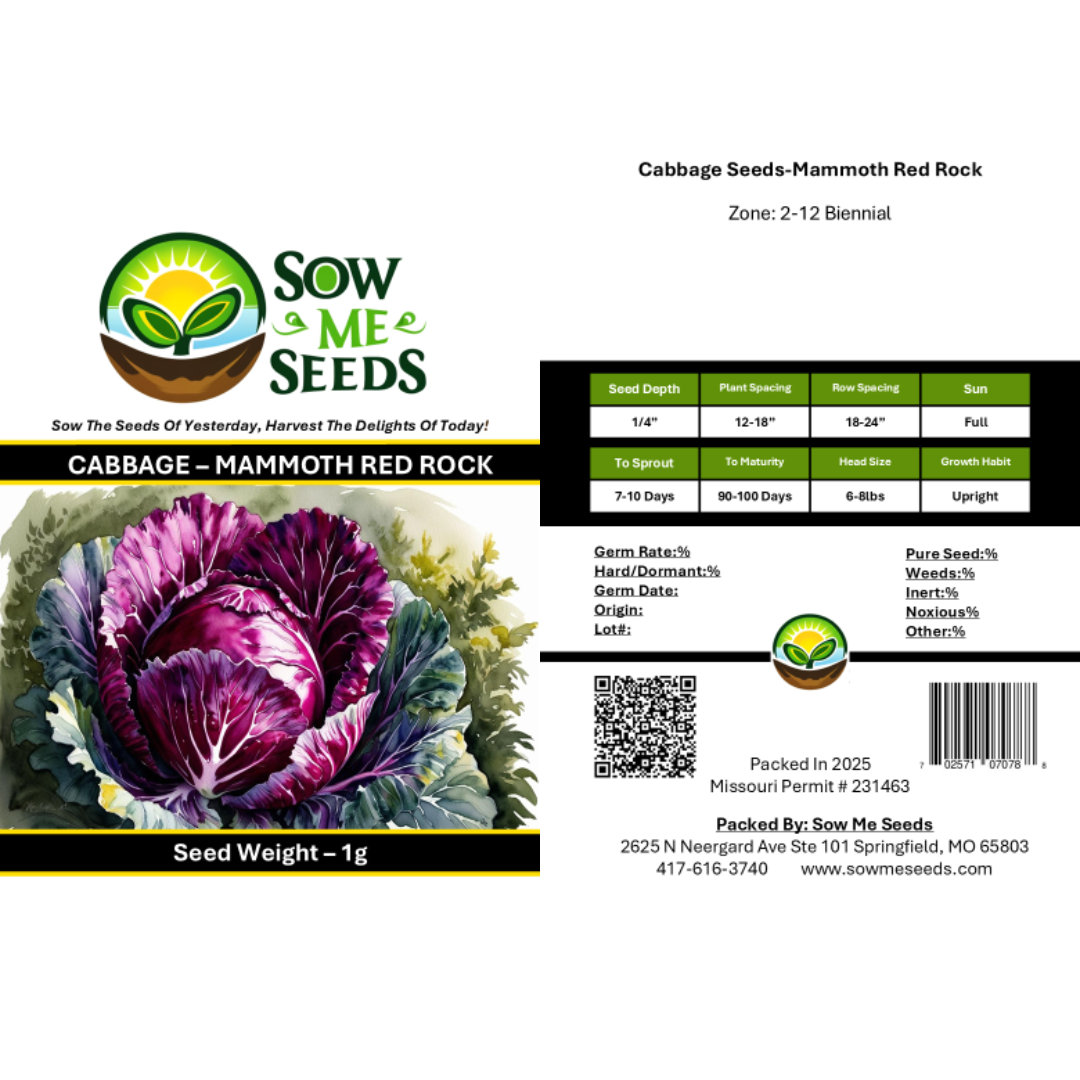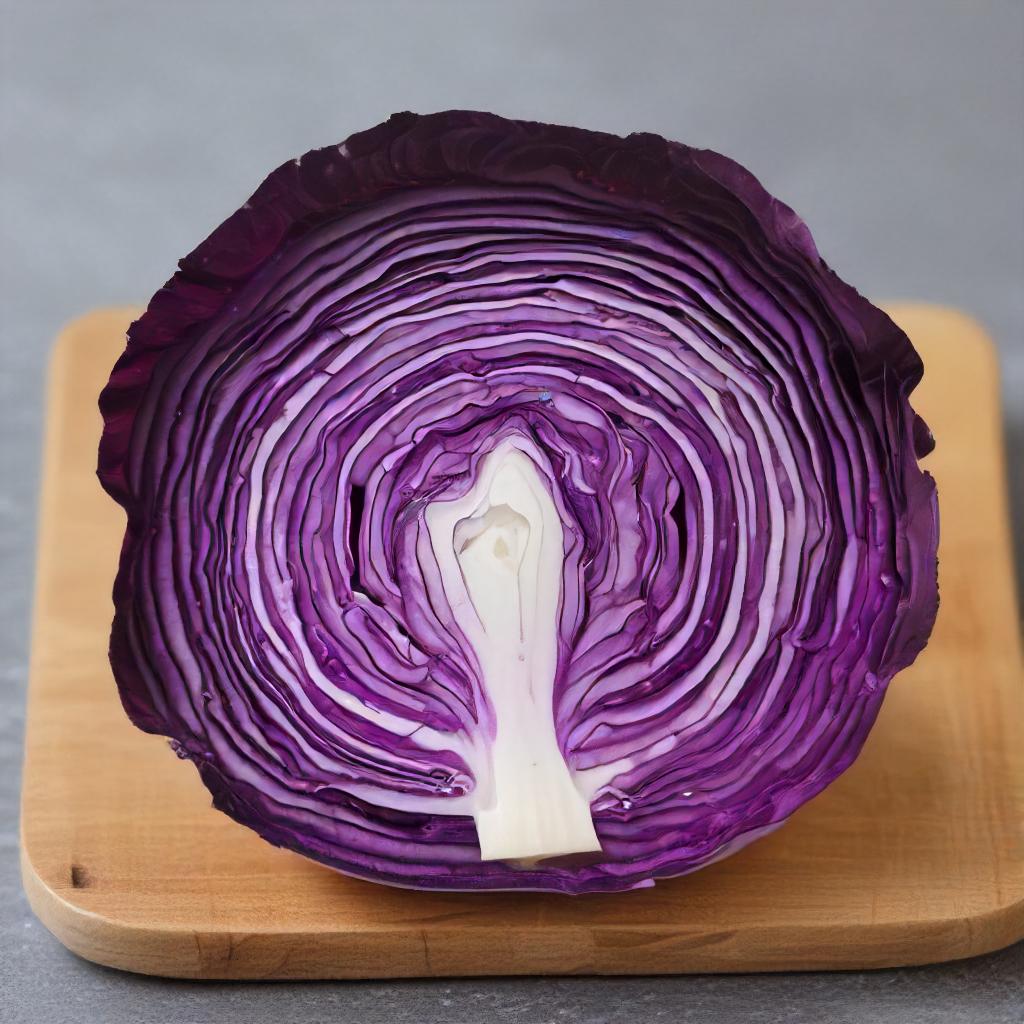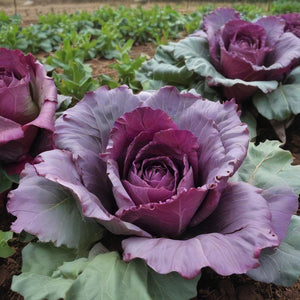- Hardiness Zone: 2-12 Biennial Typically Grown As An Annual
Seed Depth: 1/4 inch
Seed Spacing: 12–18 inches
Row Spacing: 24–36 inches
Sunlight: Full sun
Days to Sprout: 7–12 days
Days to Maturity: 90–100 days
Growth Habit: Upright, compact annual
Sunlight: Thrives in full sun, requiring at least 6–8 hours of direct sunlight daily.
Soil Type: Prefers rich, well-drained soil with a pH of 6.0–7.5. Amending with compost or organic matter improves fertility and moisture retention.
When to Plant: Start seeds indoors 6–8 weeks before the last frost. Transplant outdoors when seedlings are 4–6 weeks old and temperatures are consistently above 50°F.
Direct Sowing: In warmer climates, sow seeds directly outdoors in early spring or late summer for a fall harvest.
Indoor Sowing: Sow seeds 1/4 inch deep in seed trays or pots. Transplant when seedlings have 2–3 sets of true leaves.
Succession Planting: Sow every 2–3 weeks for a continuous harvest during the growing season.
Watering: Water deeply and consistently, keeping soil evenly moist but not soggy. Mulch around plants to retain moisture and regulate temperature.
Fertilizing: Apply a balanced fertilizer at planting and mid-season to promote head formation.
Pruning: Remove yellowing or damaged leaves to maintain plant health and prevent disease.
Pest and Disease Control: Watch for aphids, cabbage worms, and flea beetles. Use row covers or organic pest control methods as needed.
When to Harvest: Harvest heads when they are firm, compact, and reach 6–8 inches in diameter, typically 90–100 days after planting.
How to Harvest: Use a sharp knife to cut heads at the base, leaving outer leaves intact for potential secondary growth.
Seed Collection: Allow plants to bolt and form seed pods in their second year. Collect seeds from dried pods.
Storing Seeds: Store seeds in an airtight container in a cool, dry place.
Why You’ll Love It
Rich Color: Striking deep red-purple heads add vibrant color to garden beds and plates alike.
Hardy and Reliable: Cold-tolerant and well-suited for fall harvests — stores well and holds firm in the garden.
Great Texture: Dense, tightly packed leaves offer a satisfying crunch for fresh or cooked recipes.
Versatile Use: Excellent for coleslaw, braising, fermenting into sauerkraut, or shredding into salads.
Plant Characteristics
Height: 12–20 inches
Growth Habit: Compact, upright with a rounded, dense central head
Head Type: Large, deep red to purple heads, typically 6–8 inches across
Days to Maturity: 85–100 days
Hardiness: Cool-season biennial grown as an annual
Flavor and Culinary Uses
Flavor: Mild and earthy with a slightly peppery finish; deepens in flavor after a light frost
Culinary Uses: Ideal for slaws, roasting, fermenting, stir-fries, soups, and cold salads
Companion Planting Tips
Good Companions: Onions, beets, celery, and chamomile
Avoid Planting Near: Strawberries and pole beans
Bonus Benefit: Deep color helps resist some insect pests and looks gorgeous in edible landscaping
Common Issues and Solutions
Cabbage Worms and Aphids: Use row covers and introduce beneficial insects early in the season
Splitting Heads: Harvest promptly once heads are firm, especially after heavy rain
Slow Head Development: Ensure full sun, proper spacing, and consistent moisture throughout the season
Seeds Per Packet
| 1g | Approximately 240 |
| 5g | Approximately 1,200 |
Why You’ll Love It
Rich Color: Striking deep red-purple heads add vibrant color to garden beds and plates alike.
Hardy and Reliable: Cold-tolerant and well-suited for fall harvests — stores well and holds firm in the garden.
Great Texture: Dense, tightly packed leaves offer a satisfying crunch for fresh or cooked recipes.
Versatile Use: Excellent for coleslaw, braising, fermenting into sauerkraut, or shredding into salads.
Plant Characteristics
Height: 12–20 inches
Growth Habit: Compact, upright with a rounded, dense central head
Head Type: Large, deep red to purple heads, typically 6–8 inches across
Days to Maturity: 85–100 days
Hardiness: Cool-season biennial grown as an annual
Flavor and Culinary Uses
Flavor: Mild and earthy with a slightly peppery finish; deepens in flavor after a light frost
Culinary Uses: Ideal for slaws, roasting, fermenting, stir-fries, soups, and cold salads
Companion Planting Tips
Good Companions: Onions, beets, celery, and chamomile
Avoid Planting Near: Strawberries and pole beans
Bonus Benefit: Deep color helps resist some insect pests and looks gorgeous in edible landscaping
Common Issues and Solutions
Cabbage Worms and Aphids: Use row covers and introduce beneficial insects early in the season
Splitting Heads: Harvest promptly once heads are firm, especially after heavy rain
Slow Head Development: Ensure full sun, proper spacing, and consistent moisture throughout the season
Seeds Per Packet
| 1g | Approximately 240 |
| 5g | Approximately 1,200 |





Share and get 15% off!
Simply share this product on one of the following social networks and you will unlock 15% off!